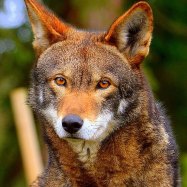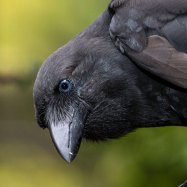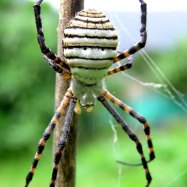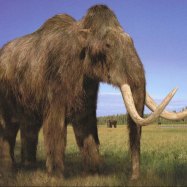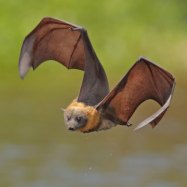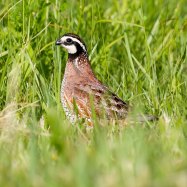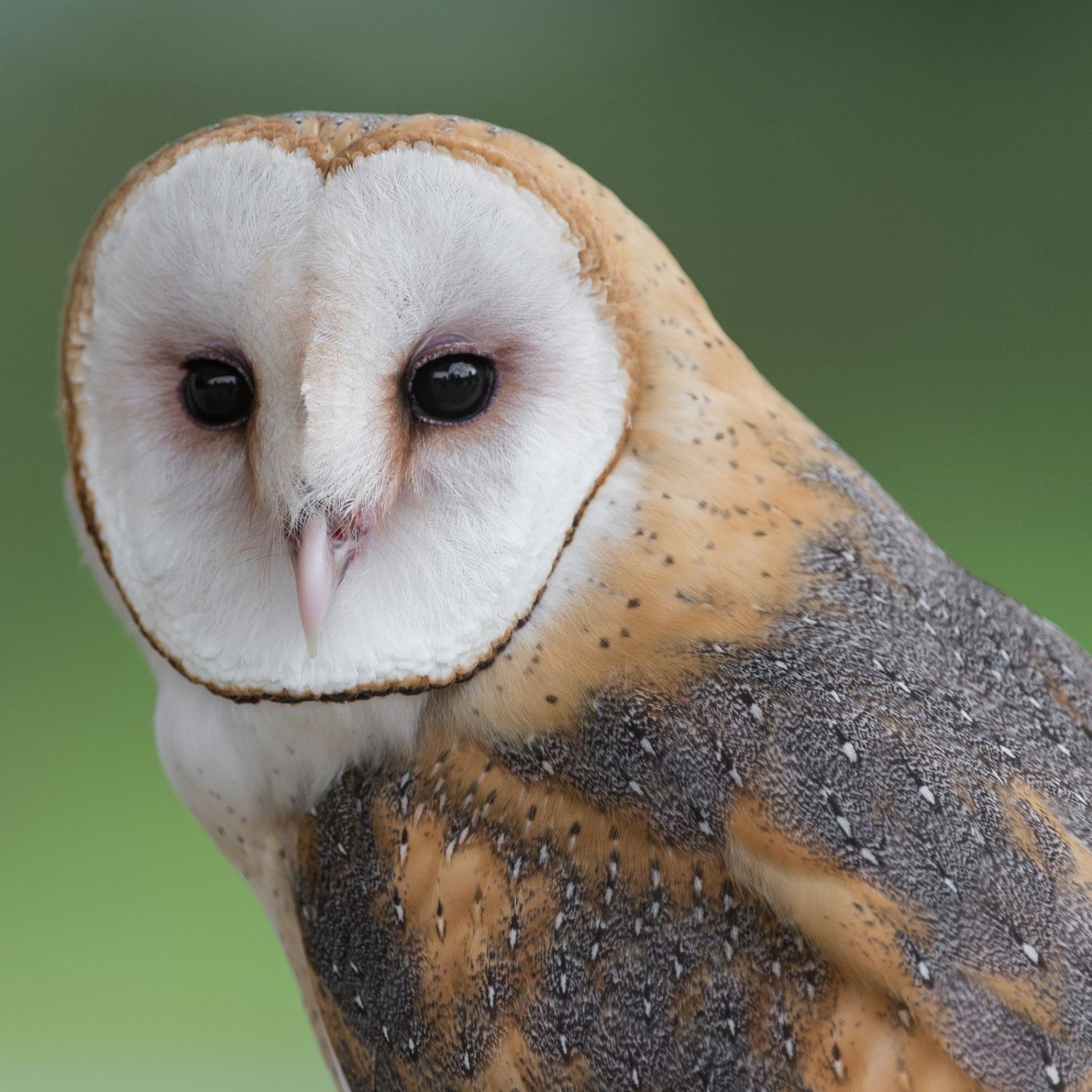
Owl
Varies by species; ranges from about 5 inches to 28 inches
Discover the fascinating world of owls, with over 200 species found around the globe! From the tiny Elf owl to the powerful Eurasian eagle owl, each boasts a unique set of characteristics and impressive hunting skills. Keep an eye out for these compact creatures with their large heads, forward-facing eyes, and sharp beaks, as they can be found in diverse habitats all over the world. #Animals #Owls #NatureFacts
Animal Details Summary:
Common Name: Owl
Kingdom: Animalia
Habitat: Varies by species; can be found in forests, grasslands, deserts, mountains, and urban areas
The Majestic Owls: Masters of the Night Sky
Under the cover of darkness, these mysterious creatures roam our skies, silent and swift, their powerful wings carrying them to their prey. Owls have long captured our imagination with their unique appearance and elusive nature. They have been the subject of legends, folklore, and even popular literature and movies. But what do we really know about these fascinating birds of prey?Owls belong to the order Strigiformes, which includes about 200 species Owl. They are found in almost every corner of the world, with the exception of Antarctica. While their characteristics and behaviors may vary, all owls share one common trait – their ability to hunt effectively at night.
Classification and Habitat
Owls belong to the kingdom Animalia, phylum Chordata, and class Aves, along with all other bird species. They are part of the order Strigiformes, meaning “owl-like,” and are placed in the family Strigidae. However, not all species fall into this family as some owls are classified under the families Tytonidae and the Podargidae.These birds can be found in various habitats, from forests and grasslands to deserts, mountains, and even urban areas. The specific habitat of an owl depends on its species and range. For example, the snowy owl is found in the Arctic, while the burrowing owl prefers open grasslands.
Feeding and Behavior
One of the main characteristics of owls is their ability to hunt and thrive in the darkness of night Ocellated Turkey. Their large, forward-facing eyes are perfect for low light conditions, and their exceptional hearing allows them to track their prey with precision.Owls are carnivorous, with their diet mainly consisting of small mammals like rodents, birds, and reptiles. Some species also feed on insects, fish, and even other birds. Their hunting methods vary, with some owls having a sit-and-wait approach, while others actively search for prey.
Most owls are solitary creatures, only coming together during mating season. While they may not interact with other owls regularly, they have a complex communication system, including various vocalizations, hooting, and body language, to communicate with potential mates and defend their territory.
Geographical Distribution and Country of Origin
As mentioned earlier, owls can be found on every continent except Antarctica. Each species has its own unique range, and some, like the barn owl, have a widespread distribution, while others, like the spectacled owl, are only found in specific regions of the world.The country of origin for owls is not specific, as they have a global distribution. However, each species may have a particular country within its range where it is most commonly found. For example, the great horned owl is native to North and South America, while the Eurasian eagle-owl is found in Europe and Asia.
Physical Characteristics
Owls have a distinct appearance, with their compact and rounded body, large forward-facing eyes, and hooked beak. Their soft and dense feathers provide them with excellent insulation, making them well-equipped to handle cold and harsh weather conditions.One of the most striking features of owls is their eyes. Unlike most birds, their eyes are located towards the front of their head, giving them binocular vision and the ability to focus on prey from a distance accurately. Their eyes are also surrounded by a facial disc, which helps funnel sound towards their ears, further enhancing their hunting abilities.
Owls come in a variety of colors, which primarily helps them blend into their surroundings and remain undetected by potential predators. Some species, like the snowy owl, have white feathers that help them camouflage in the snow, while others have mottled patterns, making them almost invisible against tree barks.
Size and Lifespan
As with most animals, the size and lifespan of an owl vary depending on its species. On average, owls range from around 5 inches to 28 inches in length. The smallest species, the elf owl, is only about 5 inches long, while the largest, the Eurasian eagle-owl, can reach up to 28 inches.In terms of lifespan, it is difficult to generalize for all owl species, as it varies depending on factors like food availability, predators, and habitat. However, some owls, like the great horned owl and the barn owl, have been known to live up to 25 years in captivity.
The Role of Owls in Nature
Aside from their influence on human culture and folklore, owls play a vital role in maintaining the balance of nature. As predators, they help control the population of small animals, such as rodents, which can otherwise cause significant damage to crops and other ecosystems.Owls are also an indicator species, meaning their presence or absence can reveal the health of an environment. Their sensitivity to changes in their surroundings, such as habitat loss, pollution, or climate change, can indicate potential threats to other species within the ecosystem.
Additionally, owls help with decomposition by consuming their prey's bones, fur, and feathers. This process speeds up the nutrient cycle in an ecosystem and helps maintain a healthy balance in nature.
The Importance of Owl Conservation
Despite their critical role in nature, many owl species are facing various threats to their survival. Habitat loss due to deforestation and urbanization, as well as climate change, are some of the major causes of decline in owl populations.In addition to these larger-scale threats, owls also face dangers from human activities, such as hunting, poisoning, and collisions with vehicles and power lines. These activities not only directly harm owl populations but also affect their food sources and nesting sites.
To combat these threats, conservation efforts are being implemented worldwide. Habitat protection, strict regulations on hunting and trade, and educational programs are just some of the ways conservationists are working to conserve owl species and their habitats.
The Fascinating World of Owls
Owls are truly fascinating creatures, with a unique set of characteristics and behaviors that have captured human attention for centuries. From their ability to hunt effectively at night to their role in maintaining ecological balance, owls have an essential place in our natural world.As we continue to learn more about these majestic birds, we must also take action to protect them and their habitats. Through conservation efforts and increased awareness, we can ensure that these masters of the night sky will continue to thrive for generations to come. So let us all marvel at the beauty and mystery of owls, and strive to coexist peacefully with them in our shared world.

Owl
Animal Details Owl - Scientific Name: Strigiformes
- Category: Animals O
- Scientific Name: Strigiformes
- Common Name: Owl
- Kingdom: Animalia
- Phylum: Chordata
- Class: Aves
- Order: Strigiformes
- Family: Various
- Habitat: Varies by species; can be found in forests, grasslands, deserts, mountains, and urban areas
- Feeding Method: Carnivorous; primarily feeds on small mammals like rodents, birds, and reptiles
- Geographical Distribution: Owls are found on every continent except Antarctica
- Country of Origin: Various
- Location: Varies by species
- Animal Coloration: Varies by species; can be brown, gray, black, white, or a combination of these colors
- Body Shape: Compact and rounded body with a large head, forward-facing eyes, and a hooked beak
- Length: Varies by species; ranges from about 5 inches to 28 inches
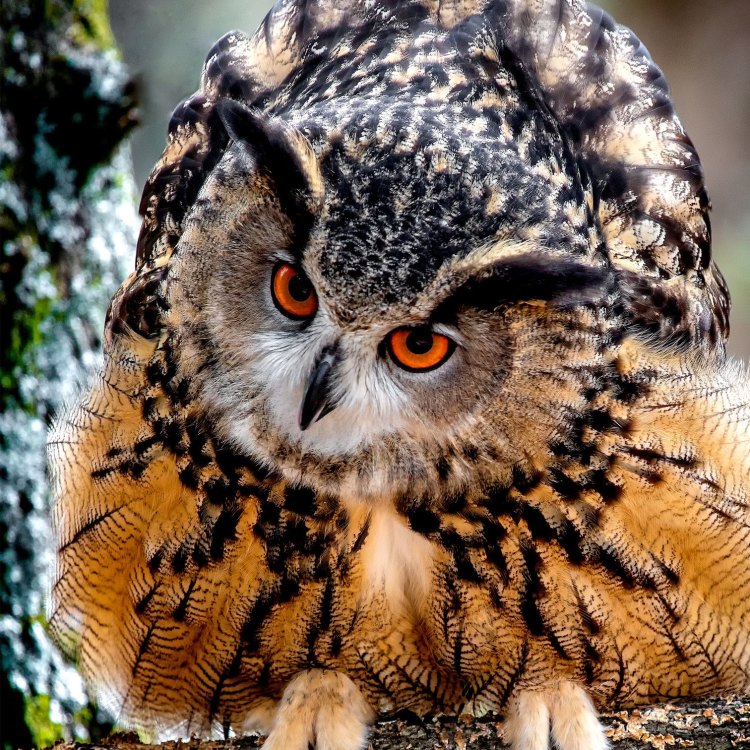
Owl
- Adult Size: Varies by species
- Average Lifespan: Varies by species; can range from 1 to 30 years
- Reproduction: Owls are monogamous and typically mate for life
- Reproductive Behavior: Owls form pairs and engage in elaborate courtship displays
- Sound or Call: Owls are known for their hooting calls, which vary by species
- Migration Pattern: Some owl species are migratory, while others are sedentary
- Social Groups: Owls are usually solitary, but some species form loose colonies
- Behavior: Nocturnal; owls are active at night and have excellent night vision and hearing
- Threats: Habitat loss, prey decline, pollution, climate change, and illegal hunting
- Conservation Status: Varies by species; some are endangered or threatened
- Impact on Ecosystem: Owls play a crucial role in controlling rodent populations
- Human Use: Owls have cultural significance in many societies and are sometimes kept as pets
- Distinctive Features: Large forward-facing eyes, silent flight, and specialized feathers for noise reduction
- Interesting Facts: There are over 200 owl species worldwide; owls can rotate their heads up to 270 degrees
- Predator: Large birds of prey, mammals, and snakes may prey on owls
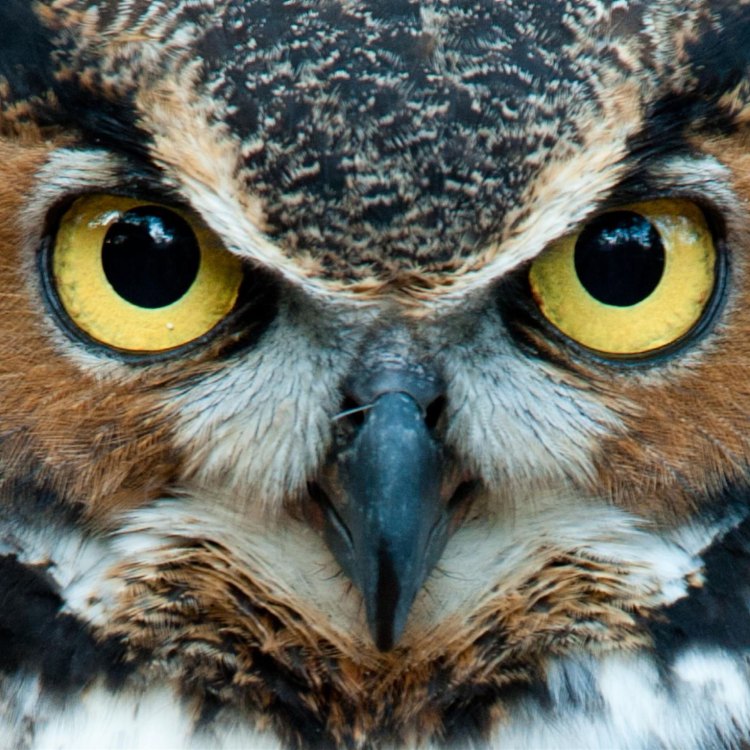
Strigiformes
The Mysterious and Majestic Creatures of the Night: All About Owls
When we think of owls, we often picture wise and mysterious creatures with their distinct hooting calls and ability to see in the dark. Owls have captivated humans' fascination for centuries, appearing in folklore, literature, and art. But beyond their mystical aura, these birds have some truly fascinating features and behaviors that make them unique and vital components of our ecosystem. In this article, we will delve into the world of owls, exploring their size, lifespan, behavior, threats, conservation status, and more PeaceOfAnimals.Com.The Basics: Size, Lifespan, and Reproduction
Owls are birds of prey, belonging to the order Strigiformes, which comprises over 200 species worldwide. The size of an owl varies by species, with the smallest being the elf owl, measuring about 5 inches in length, and the largest being the Eurasian eagle owl, which can reach up to 2 feet in length. These magnificent birds have broad wings, a sharp beak, and powerful talons, making them efficient hunters.The average lifespan of an owl also varies by species, with some living up to 30 years in the wild. However, most species have a lifespan of 1-10 years, which can be affected by factors such as habitat quality, predation, and disease. In captivity, some owls can live well into their 20s.
Owls are monogamous birds, meaning they form pairs and remain together for life. They typically mate once a year, during the breeding season, which varies by species and location. Once the female lays her eggs, both parents take turns incubating them for about 30 days until they hatch Ori Pei. The baby owls, called owlets, are born with a fluffy down coat and are dependent on their parents for food and protection. As they grow, the parents teach them how to hunt and survive in their natural habitat.
Reproductive Behavior and Calls
Owls have a unique reproductive behavior, with pairs engaging in elaborate courtship displays to attract a mate. These displays can involve dancing, calling, and even offering gifts such as prey or nesting materials. Once the pair bonds, they will remain together for life, defending their territory and raising their young.Owls are known for their hooting calls, which vary by species. Some, like the great horned owl, have a deep hoot, while others, like the barn owl, have a screeching call. These calls serve various purposes, such as communicating with other owls in their territory, marking their territory, and attracting a mate.
Nocturnal Creatures: Behavior and Migration
One of the most distinctive features of owls is their nocturnal behavior. These birds are active at night, hunting for food and remaining hidden during the day. To aid in their hunting, owls have excellent night vision and hearing, with some species being able to hear prey moving underground.While some owl species are sedentary, meaning they stay in one area year-round, others are migratory. Migration patterns vary by species and can also vary within a species, depending on the region. Generally, owls migrate in response to changes in food availability, with colder climates triggering some species to travel south for the winter.
Living the Solitary Life: Social Groups and Behavior
Owls are usually solitary, meaning they live and hunt alone, except during the breeding season. However, some species do form loose colonies, roosting in the same area, and occasionally hunting together. These colonies are not as organized as those of other birds, and each owl maintains its own territory even within the roosting site.As efficient predators, owls play a crucial role in controlling rodent populations, making them a valuable asset to their ecosystem. They are also an essential link in the food chain, with their prey consisting of small mammals, insects, and even other birds.
Threats and Conservation
Unfortunately, owls face various threats that have a significant impact on their populations. Habitat loss and degradation due to human activities such as deforestation, urbanization, and agriculture, are a significant concern for many owl species. Loss of prey due to habitat alteration and climate change can also affect owl populations.Illegal hunting and the illegal pet trade also pose a threat to owls. In some cultures, owls are considered omens of bad luck or symbols of witchcraft, leading to persecution and killing. Owls are also sometimes captured and sold as pets, which usually leads to poor welfare and long-term harm to the species' genetic diversity.
The conservation status of owls varies by species, with some, like the snowy owl, being listed as threatened, and others, like the short-eared owl, being listed as least concern. The International Union for Conservation of Nature (IUCN) regularly evaluates and updates the conservation status of all owl species to determine appropriate conservation measures.
The Human-Owl Connection
Owls have a significant impact on humans, not just as a cultural symbol but also as a source of scientific study. In some societies, owls are seen as symbols of wisdom and protection, while in others, they are feared and persecuted. In ancient Greece, owls were believed to be companions of the goddess Athena, representing wisdom and knowledge.In the scientific world, owls have become a subject of interest, with researchers studying their unique abilities and behavior. For example, the great grey owl's silent flight has inspired engineers to develop quieter aviation technology. Owls' specialized feathers, which allow for noise reduction, have also influenced the design of wind turbines to reduce noise pollution.
Distinctive Features and Interesting Facts
One of the most recognizable features of owls is their large, forward-facing eyes. Unlike most birds, who have eyes on the sides of their heads, owls' eyes are positioned in front, giving them excellent depth perception and binocular vision. Their eyes are also highly adapted to see in low light, allowing them to hunt at night successfully.Another intriguing fact about owls is their ability to rotate their heads up to 270 degrees without damaging their blood vessels or nerves. This allows them to see in all directions without turning their bodies, making them efficient hunters and protectors.
Predators of Owls
Despite their hunting prowess, owls are also prey for a variety of predators. Large birds of prey, such as eagles and hawks, are known to prey on owls, as well as mammals like foxes and coyotes. Snakes can also pose a threat to owls, especially while they are nesting on the ground.In Conclusion
Owls are truly magnificent creatures, with their unique features, behavior, and role in our ecosystem. As humans, it is our responsibility to appreciate and protect these birds and their habitats. Through conservation efforts, we can ensure that these mysterious and majestic creatures of the night continue to thrive and enchant us for generations to come. So next time you hear an owl's hoot in the night, take a moment to appreciate the magic and wonder of these winged beauties.
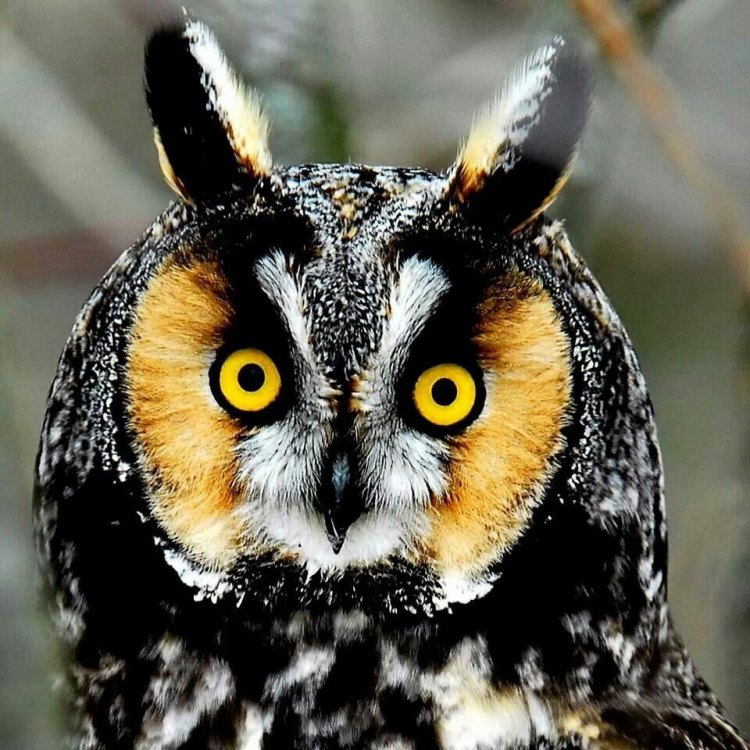
The Majestic Owls: Masters of the Night Sky
Disclaimer: The content provided is for informational purposes only. We cannot guarantee the accuracy of the information on this page 100%. All information provided here may change without prior notice.

